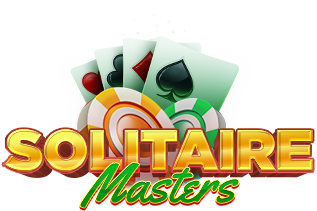Gin Rummy entertainment is part of the family of Rummy games. However, it is different from the basic Rummy game as in this case, the players don't expose their sets. The Gin Rummy game will keep running until the players are ready to end the respective round. When a player ends the round, he/she is the one who will win the points. In case the opposing player has valid sets or runs in his/her end, these points won't count as he/she didn't end the round.
Gin Rummy History
All in all, the current Gin Rummy game originates from the Conquian and Rum card games that were played in 1905. In 1909, this new variation was introduced by Elwood T. Baker in New York. Since then it has become a favorite pastime for many individuals even though till the 1930s it was under another name known as the Gin Poker.
Gin Rummy Game Rules
Before starting to expose Gin Rummy and its rules, it is important for the players to understand its basic concepts. In the first place, they should know that a set means gathering four or three cards that have the same rank, for example, three eights of spades, diamonds, and clubs. A run means that the player has a minimum of three cards of the same suit in a sequence. For instance, the gamer can have the six, seven, eight, and nine of clubs. When it comes to arranging the run, the players should know that the Ace is always the lowest. Also, when building the runs or the sets, the gamers must remember that the same card cannot be part of a run and a set at the same time. The meld is another term that is used in Gin Rummy and it stands for both runs and sets. The stock is formed of all the cards which are in the middle of the table and from which the players pick one card in each round. It's to be noted that all the cards in the stock are face down. The discard pile is formed of face-up cards that are positioned next to the stock. After each round, the players will discard one new card onto this pile. Deadwood is one more term used for the cards which are in the player's hand and cannot fit any meld. Knocking is another concept that players use when they play Gin Rummy and it is a synonym to ending the round by the player when he/she puts a card with the face down directly on the discard pile. The Gin notion is used for the moment when the player has 10 cards in his/her hand and they are all part of melds. The Big Gin is a situation that all players would want to encounter. It means that all the 10 cards that the player has in his/her hands are part of the melds and when the player draws the 11th one, it is also suitable to become part of one of the existing melds. Finally, the lay off term is suitable for the situation when the player adds his/her deadwood cards to his/her opponents' melds.
As for the rules of such a game, the players will receive 10 cards each. All the other cards are placed facedown and form the stockpile. The top card will be placed with the face-up next to the stockpile as it creates the discard pile. When their turns come, the players will have to choose if he/she wants to pick the card, which is faced up or wants to try his/her luck and take a facedown card directly from the stockpile.
When Does Player Win Gin Rummy Game?
A player ends the round when he "knocks" the table. This means that he/she will place his/her discard card with the face down. He/she will be a winner if the number of melds is higher than the deadwood. When it comes to counting the points, the calculation is made by the value of each card. Also, if the player manages to end the round without having any deadwood, then he can declare a "Gin" and will receive 25 points in addition as a bonus for such a nicely played session. To add more, if the player knocks the round and ends it, all the other players don't have any options but to lay down their valid sets and runs. Also, in case the opponents find that they can create new melds, they can lay off other cards that they have in their hands and create new melds, where any card that remains on the table will be scored. If the player ends the round with a Gin, the rules remain the same with only one exception. The opponent cannot lay off his/her remaining cards to create new melds with the player's spare cards.
How Is Score Established?
To calculate the correct scoring, the members need to know very well how many points they can have when they end the game. The knock points will be formed from the difference between his/her deadwood points and the opponent's ones. Therefore, in case the player who calls the "knock" has 3 deadwood points and the opponent has 21, then the knocker will receive 18 more points. A player who ends the game with a Gin will get a bonus of 25 more points. Also, if he/she ends the game with a Big Gin, then the bonus becomes 31 extra points. In case the opponent has equal or fewer deadwood points than the player who declares the knock, then the opponent will get 25 points and the difference between the deadwood points. Also, the knocker gets zero points in a situation called an Undercut. On the other hand, if the player finishes the round with a Gin, there will be no Undercut situation even if the opponent manages to get zero deadwood points.
